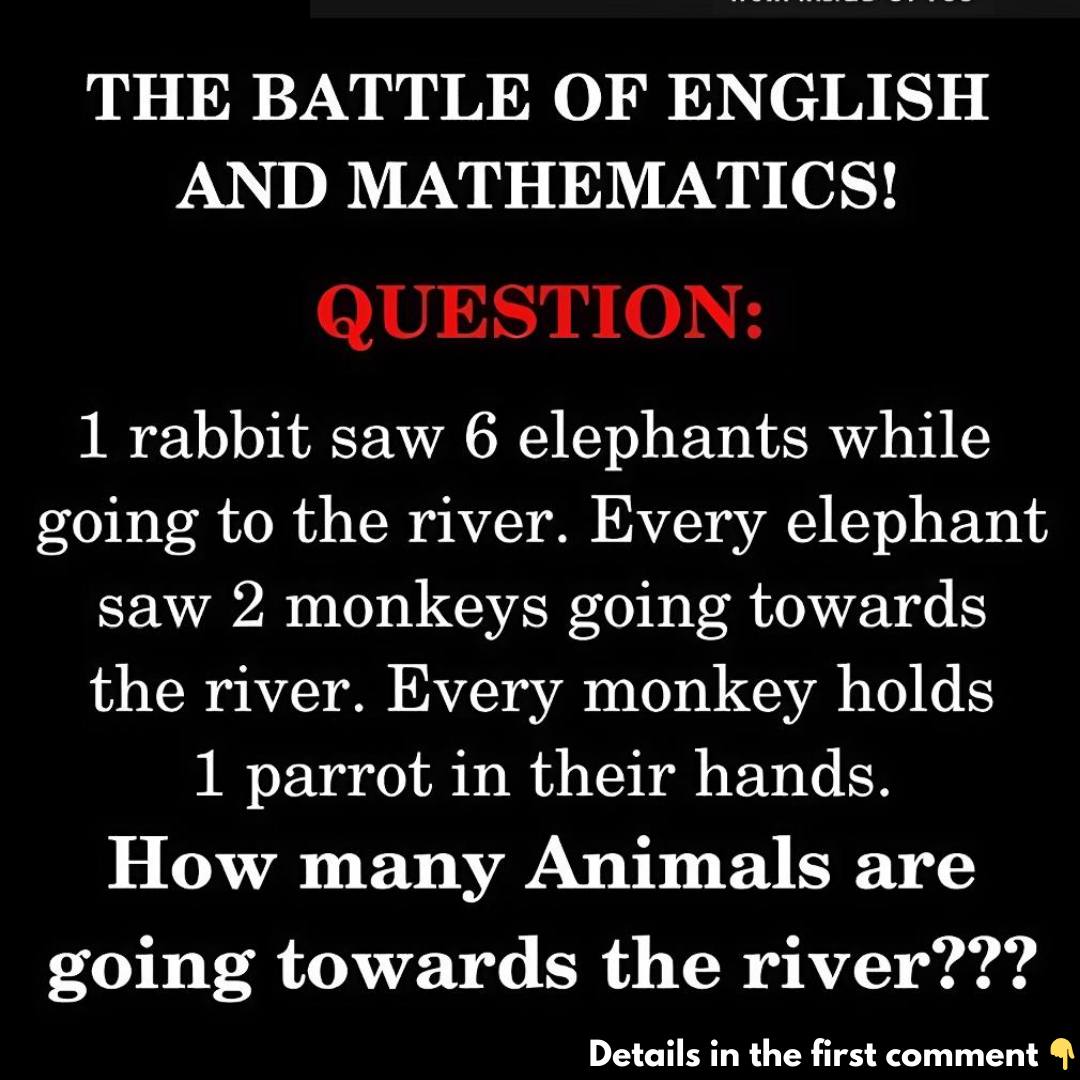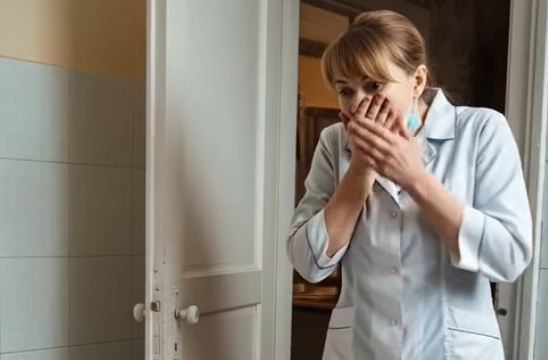The Battle of English VS Math – Which Reigns Supreme?
When it comes to problem-solving, the debate between English and Math enthusiasts is as old as time. English, with its flair for creativity and expression, versus Math, the realm of logic and precision. But what happens when these two worlds collide? In today’s digital age, one mind-bending riddle has put this battle to the test, and the internet can’t seem to get enough of it.

The Riddle That Sparked the Debate
It all started with a seemingly simple math riddle: “1 rabbit saw 6 elephants while going to the river.” At first glance, it appears to be a straightforward problem, but as we’ll soon uncover, there’s more to this puzzle than meets the eye. The riddle continues with a twist that leaves both Math and English lovers scratching their heads.
Understanding the Puzzle – Breaking It Down
Before diving into the solution, let’s break down the riddle step by step. Here’s how it goes:
1 rabbit saw 6 elephants while going to the river.
Every elephant saw 2 monkeys going towards the river.
Every monkey holds 1 parrot in their hands.
Sounds simple, right? But as with any good puzzle, the devil is in the details.
The Rabbit’s Perspective – Starting Simple
We begin with the rabbit. The riddle tells us that one rabbit saw six elephants on its way to the river. No tricks here—just one rabbit and six elephants. But don’t be fooled by this simplicity; the challenge lies ahead.
The Elephants’ View – Complicating Matters
Next, we learn that every elephant saw two monkeys heading towards the river. Here’s where things get tricky. The phrase “every elephant” suggests that all six elephants saw the same two monkeys, not different pairs. This subtle detail is where the puzzle starts to challenge our assumptions.
The Monkeys and Their Parrots – Adding Layers
Each monkey, in turn, holds one parrot in its hands. So, if there are two monkeys, that means there are also two parrots. The relationship here is direct and straightforward, but it’s crucial to remember that we’re dealing with the same two monkeys seen by all six elephants.
Solving the Puzzle – Arriving at the Answer
Now that we’ve dissected the riddle, it’s time to put the pieces together. The key to solving this puzzle lies in understanding that the same pair of monkeys was seen by all the elephants, and each monkey holds one parrot.
Total Animals Heading to the River
Let’s count the animals:
- 1 rabbit
- 2 monkeys
- 2 parrots
That gives us a total of 5 animals heading to the river. It’s a clever trick, using phrasing to make the problem appear more complicated than it is.
Why This Puzzle Is So Intriguing
The genius of this riddle lies in its simplicity. It doesn’t require complex calculations or advanced math skills. Instead, it challenges your ability to pay attention to detail and think logically. The English language plays a critical role here, with its ability to convey meaning through subtle nuances.
The Role of Language in Problem-Solving
In many ways, this riddle is as much about language as it is about math. The way the problem is worded forces us to think critically about what’s being said and what isn’t. It’s a perfect example of how English and Math can come together to create a challenge that tests both logical reasoning and linguistic understanding.
The Importance of Precision – Both in Math and Language
Precision is key in both math and language. A single word or phrase can change the entire meaning of a problem or statement. This riddle highlights the importance of paying close attention to the details, whether you’re solving a math problem or analyzing a piece of text.
The Broader Implications – Beyond the Riddle
While this puzzle is a fun challenge, it also has broader implications. It reminds us that the skills we develop in both math and English are interconnected. Logical reasoning, attention to detail, and the ability to understand and manipulate language are all essential skills that serve us in countless ways throughout our lives.
Encouraging Critical Thinking
This riddle encourages us to think critically and question our assumptions. It’s a valuable reminder that things aren’t always as they seem, and sometimes, the simplest problems can have the most complex solutions.
Conclusion – Embracing the Challenge
In the end, the battle between English and Math isn’t about which one is better. Instead, it’s about how these two disciplines complement each other, creating challenges that engage our minds and push us to think more deeply. Whether you’re a wordsmith or a number cruncher, there’s something to be gained from embracing the challenges that lie at the intersection of English and Math.
So, the next time you come across a riddle that seems too simple to be true, remember: the real challenge might be hidden in the words themselves. Embrace the battle, sharpen your skills, and enjoy the journey of discovery that awaits.





